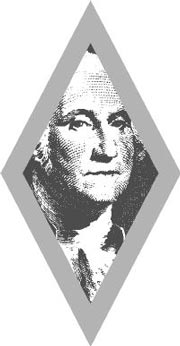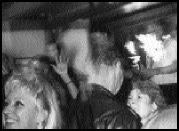IT WON’T REDUCE travel time or increase the speed of cars on freeways, and it won’t make driving safer. But the Washington State Department of Transportation (WSDOT) is recommending a proposal to open Eastside high-occupancy-vehicle (HOV) lanes to all drivers at night, at a cost to taxpayers of $3 million, which includes $1 million to implement high-occupancy toll, or HOT, lanes. The state Transportation Commission will make a decision after two public meetings this week in Bellevue and Kent.
Car-pool lanes are restricted to motorcycles and vehicles carrying two or more people. Since the state first implemented the restrictions in the 1970s, says WSDOT spokesperson Linda Mullen, HOV-lane envy has been “an issue that just never seems to go away.” A rush-hour drive down Interstate 405 on the Eastside or Interstate 5 in Seattle reveals why: When regular lanes are at a standstill, traffic in the car-pool lane remains relatively swift—so much so that many single drivers, undeterred by the threat of detection, move into the lane to pass other single-occupant vehicles.
Every legislative session, state Re-publicans push a proposal to open HOV lanes to all drivers, usually during “off-peak” hours. And even some Democrats are starting to say that something should be done. Earlier this year, all 15 Democratic members of the House Transportation Committee wrote a letter to Transportation Secretary Doug MacDonald, asking that the WSDOT “again explore” opening up HOV lanes. The issue is one of perception: I pay for the HOV lanes, too; why should I have to sit in traffic while the people in that lane get a break?
“It’s certainly an understandable position,” says Mark Hallenbeck, head of the University of Washington’s Transportation Research Center, which provides data and software to the WSDOT. The WSDOT’s own study concedes this point. The evaluation arose, it says, from “the message sent by the public and legislators: Open HOV lanes to everyone when feasible.”
The department’s definition of “feasible” hours—between 7 p.m. and 5 a.m.—is unlikely to offend anyone’s sense of fairness, because so few people are on the road at those hours. So in one sense, opening up HOV lanes at night can be seen as a compromise. But if opening HOV lanes at night seems fair, it is also, the WSDOT acknowledges, virtually useless. “What we know is that traffic congestion in most corridors ends around 7 at night,” says spokesperson Charles Prestrud. In the few places where it will help, the benefit is minimal: a one-minute reduction in travel time between Bellevue and Southcenter on I-405, or a 1 mph improvement on westbound Highway 520 heading into Seattle.
SO WHY NOT just open the HOV lanes up to everybody all the time? Consider, says Hallenbeck, the reason traffic slows down in the first place: Too many people try to use a lane that can’t accommodate them all. The reason HOV lanes work, Hallenbeck says, is because they carry fewer cars than the lane’s maximum capacity. If you open up fast-moving HOV lanes to everyone, traffic redistributes, causing high traffic volumes—and stop-and-go traffic—for everyone.
In a survey of public feedback on the HOV proposal, the WSDOT discovered that the most commonly mentioned subject wasn’t the hours of operation at all—it was enforcement. Between 1 and 7 percent of all drivers in the area’s HOV lanes violate the law, according to the WSDOT—more in places where traffic is heavy or state troopers aren’t around to keep drivers honest. The problem, critics say, is that the penalty—an $86 fine, far less than the $250 or even $500 typical in other states—may not be enough of a disincentive to keep people from sneaking into the lanes. Nonetheless, the WSDOT’s proposal includes no money for beefing up enforcement on the Eastside or anywhere else.
Let’s not forget, either, that the Legislature remains essentially deadlocked on the state’s most pressing challenge: how to pay for dozens of transportation projects after the failure of Referendum 51, the gas-tax proposal that voters rejected in November. In the scheme of roadway expansions and safety projects measured in the billions, $3 million for the opening of HOV lanes (sign changes account for much of that cost) might not seem like a lot of money. But it would be enough to nearly double the state’s $3 million trip-reduction program, which last year took almost 20,000 cars off the road, or fund another month or two of Seattle’s viaduct-replacement study. Hardly the sort of stuff that elicits front-page headlines, but potentially more worthy, all the same.








